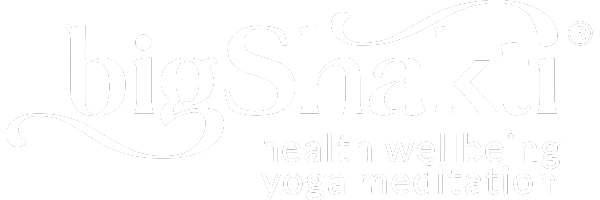Yoga of Mental Health Workshops → More Info
Unearthing Your Spiritual Gold With Yoga Tantra And Jung

Two powerful psychospiritual systems, the ancient practices of Yoga Tantra and Carl Jung's analytical psychology, offer profound and practical approaches to transcending the limitations of the ego and unearthing your spiritual gold. Together, the two systems form a comprehensive guide through the complex landscape of the psyche.
Jung's concept of "individuation," the aim of his life's work, endeavors to create a harmonious and integrated relationship between the ego and the unconscious. Jung's methods point towards a transcendent awareness of yourself as a universal entity— a whole Self. Similarly, yoga tantra seeks to liberate you from the constraints of egoic living through knowledge and practices that bring your unconscious to the light of awareness. The aim of yoga tantra is to integrate individual consciousness with cosmic consciousness.
Both approaches recognize that within your shadow—the aspects of yourself you've repressed, denied, or failed to recognize—lies your greatest potential for transformation. But this potential remains obscured by the heaviness of an unexamined shadow. By engaging in shadow work, you begin the alchemical process of transmuting opaque, leaden consciousness into pure light—spiritual gold.
The Dark Shadow and the Golden Shadow
While most people think of the shadow as harmful and destructive, driven by our fears, desires, and instincts, it also contains any positive qualities we have repressed or never developed in ourselves, such as strength, power, or ability to love ourselves. For example, a person who identifies strongly as kind and accommodating might repress their assertiveness, which then becomes part of their shadow.
Integrating the shadow involves recognizing and accepting these hidden aspects of ourselves, both "negative" and "positive." Whether positive or negative, unresolved shadow issues continue to fester in the psyche, causing great suffering and even mental illness. Integrating the positive and negative forces within the shadow is crucial for psychological health and personal growth. Jung also said that unearthing our golden shadow can be more difficult than our dark shadow.
Jung's Approach to Unearthing Your Spiritual Gold
"It is a therapeutic necessity, indeed, the first requisite of any thorough psychological method, for consciousness to confront its shadow." - Carl Jung.
Carl Jung developed a comprehensive body of work that his students later synthesized into the theoretical framework known as Jungian psychology. At its core, Jungian shadow work begins with understanding the fundamental aspects of your psyche.
Central to Jungian theory is the concept of ego, your conscious sense of self, and its relationship to your unconscious, the part of your mind beyond immediate awareness. Jung also introduced the idea of personae, the social masks you wear in different situations, and contrasted these with your deeper, more authentic Self - the totality of your being, which includes conscious and unconscious elements. Jungian practices include therapy, dreamwork, active imagination, and creative expression.
Jung emphasized working with archetypes, the universal imprints of thought and behavior, and symbols representing deeper psychological and spiritual truths. In Jungian psychology, the shadow manifests symbolically as demons, monsters, villains, outcasts, and anything representing the unwanted "other." The shadow's symbols include natural forces like caves, animals, the abyss, and the underworld. These symbols reflect the hidden self; your dark, mysterious, chaotic, and potentially frightening nature.
Jung discovered that the shadow isn't merely a negative force but also the repository of untapped potential, the source of libido, creative drive, and your most luminous qualities and aspirations. You reach your inner treasures through the valley of your shadow.
Yoga Tantra's Approach to Unearthing Your Spiritual Gold
Yoga tantra, a centuries-old system of thought within yoga philosophy, also aims to understand the components that make up the human and divine. Shadow work from this perspective involves understanding:
- The elemental forces of nature that create the human realm (gunas)
- The sheaths or layers of being (koshas)
- Samskaras (mental imprints)
- Vasanas (karmic residues)
- Chakras (psychic centers)
- And symbols
The practices and techniques include meditation, mantra, ritual, and visualization.
In classical yoga tantra, the shadow as a symbol is portrayed as the Dark Goddess or Wrathful Deity, with Kali being a prominent example. She embodies powerful symbols, including the cosmic void, violent desires, unstoppable strength, cutting away from the false self, and the cycle of birth, death, and rebirth. These symbols reveal aspects of your psyche typically shunned by society, culture, and certain spiritual and religious traditions.
Yoga tantra takes a radical approach by embracing these elements as essential parts of your whole being. It acknowledges that you are a complex being with enormous power, often diminished by your false self (ego), yet whose very existence embodies life and death.
The goal is not to banish or suppress these darker aspects or to quell the immense energy. Instead, yoga tantra seeks to rescue them from oblivion, bringing them to your consciousness where they can be understood, sometimes disarmed (e.g., when they cause harm), and eventually integrated.
Yoga tantra recognizes that your shadow contains vast potential for transformation and that shadowlands must be explored to find your spiritual gold. By fostering a dialogue with your less noble desires and tendencies and the symbols that scare you, you can harness this potent energy and redirect it toward your own psycho-spiritual growth and, importantly, the evolution of society.
Transcendent Consciousness

Both Jungian psychology and yoga tantra share a fundamental insight: personal transformation primarily occurs through non-rational means.
While both traditions value intellectual understanding, they recognize that the deepest truths of your existence transcend the rational mind. Both traditions offer a variety of unique psychospiritual practices designed to explore subtle consciousness.
The aim is a transcendent state of consciousness beyond ego-bound existence. Jung calls this individuation and activation of the transcendent function, while yoga tantra terms it as self-realization and moksha (liberation). Both seek the union of the apparent opposites within you and the realization of your more expansive self.
The Dangers of Repressing Your Shadow
Both Jungian psychology and yoga tantra warn against the dangers of repressing aspects of yourself that contain power, especially the dark forces of your psyche that can manifest as unacceptable or antisocial desires or destructive impulses. In yoga tantra, this repression can lead to spiritual delusion, where you might use spiritual practices and knowledge to avoid confronting (or at least acknowledging) your darker aspects.
Jung cautioned that denying your shadow only makes it stronger and more autonomous. According to Jung, an ignored shadow can project itself onto others, fostering prejudice, scapegoating, and even violence. This projection can escalate to a societal level, potentially leading to large-scale conflicts.
The Blessings of Integrating Your Shadow
Jung linked the integration of the shadow to global peace. When asked about the possibility of a third world war, he said it would depend on humanity's ability to integrate its collective shadow—a task he saw as challenging given the state of the world. Reflecting on our present global situation, we still struggle with this monumental task. However, there is hope. Every person who takes responsibility for their own shadow contributes to transforming our collective consciousness.
Jungian psychology and yoga tantra approach shadow integration as a transformative process of acknowledging weaknesses, facing fears, and accepting the parts of yourself you don't like. While this path is challenging, it offers the reward of reclaiming aspects of your being long cast aside, leading to greater wholeness and authenticity. Both systems view this work as essential for self-realization and liberation.
Key points to remember before embarking on your shadow work:
- Shadow work is an ongoing process, not a one-time event.
- Your shadow has depth, with your most profound fears and traumas hidden in the deepest recesses of your unconscious mind.
- A gradual approach is preferred over cathartic release to avoid destabilizing your ego.
- The combination of theory, ritual, and meditation practice is ideal.
- Your shadow can't be conquered or obliterated but continually integrated.
By engaging in this work, you infuse your psyche's heavy and seemingly immovable aspects of your psyche into light-filled self-realization and wholeness - your spiritual gold.
Learn More
Our Facing the Shadow Online Course is a practical, enjoyable study for those interested in engaging with the concepts and practices mentioned in this article.
Interested to learn more about Yoga Tantra?
Start with our FREE Introduction To Yoga Tantra lecture.
Categories
- Yoga Therapy (59)
- Meditation (33)
- Yoga Psychology (41)
- Consciousness (31)
- Everyday Wisdom (34)
- Yoga Nidra (14)
- Relaxation (26)
- Spirituality (26)
- Wisdom (6)
- Meditation Techniques (42)
- Prana - The subtle breath (16)
- Yoga Philosophy (27)
- Chakras (28)
- Yoga (15)
- Diseases (10)
- Yoga Meditation Research (5)
- Ayurveda (4)
- Third Eye - Ajna Chakra (7)
- Podcast (23)
- Articles by Jayne Stevenson (17)
- Articles by Swami Shankardev (25)
- Life Purpose (8)
- Yoga Tantra (20)
- Shadow Self (10)
- Symbols (3)
- Carl Jung (6)
- Mantras (19)
- e-mag (16)
- Mental Wellness (47)
- Stress Management (12)
- Emotion (3)
- Self-Awareness (1)
- Self-Regulation (2)
- Healing (3)
2025 Yoga of Mental Health Workshops
- Sāṁkhya Philosophy & Mental Health: A Yogic Path to Holistic Well-being
- Uncovering the Roots of Mental Illness: Insights from the Gita & Patanjali
- Restoring Self-Regulation: Yogic Techniques for Emotional Resilience & Inner Strength
- Mantra Therapy: Transforming Thought Patterns for Emotional Healing & Mental Wellbeing






